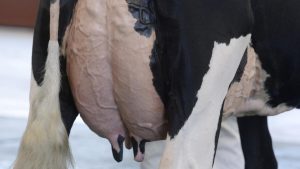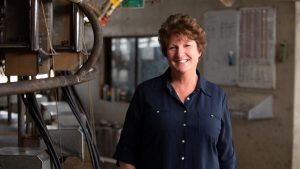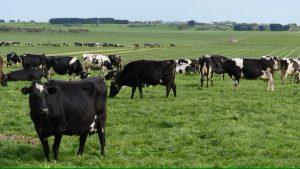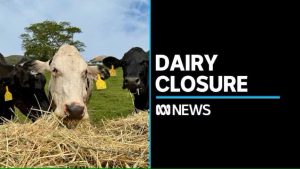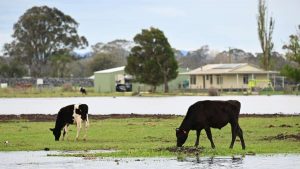
Key points:
Farmers are experimenting with all types of renewable technology
Some are trading renewable energy with neighbours
Solar is popular, but systems using woodchips and straw as biomass have potential
His power had gone out on his Canowindra property in Central West NSW, and his energy provider had told him it would take three days to get it back on.
“I headed down the hill to grab the 20-kilovolt generator, revved the crap out of my ute getting up the hill. I’m drenched. I stick the generator into the system just as the power comes back on,” he said.
He bought solar panels and a battery using a government grant and a loan from the Rural Assistance Authority.
He now trades that power with neighbouring businesses using a ‘peer-to-peer’ system.
“We can use our own solar first, fill up the battery second, trade it between the house and the bar/cafe we’ve got in the middle of Robertson, and when we’ve got excess energy, we can send that to Rosnay (a vineyard), or The Pines (a bed and breakfast).”
Pecora Dairy is a net producer of power & carbon positive. Last 6 mths energy attached. Energy costs once $3k p/quart .. now $700. Will b looking to help local businesses bring down running costs and push green credentials = strength & resilience & integrity pic.twitter.com/c6wn25V5yr
— Michael Cains (@michael_cains) October 4, 2021
Mr Cains is not the only dairy farmer doing this, with a 2020 survey by the peak industry body finding that 71 per cent of farms installed at least one type of renewable energy between 2015 and 2020.
Dairy Australia said the trend was well up from 44 per cent and mostly included solar panels, water heating, and variable speed drives, which regulate energy flow into machinery to make it more energy efficient.
While data across the entire agricultural industry is not available, it is clear many are making the switch.
Mr Cains’ neighbour, winery and orchard owner Sam Statham has installed 87 solar panels to power his property and contribute to the ‘peer-to-peer’ system.
Mr Statham said he generally irrigated during the day when the solar pumps work best.
“That’s when the plants need water, but that’s also when the water will evaporate the most from the heat from the sun, so what we did was put our irrigation dripper tubes underground in the middle of the vine row,” he said.
Further north in Queensland, Darling Downs cotton and chickpea producer Don Baartz used a ‘green loan’ from a major bank to spend $37,600 on a solar system to run his 18-kilowatt bore pump.
As well as reducing his emissions, he said it is saving him $8,000 a year in electricity costs.
Turning farm biomass into energy
Solar power is not the only type of renewable energy that farmers are turning to. Waste products from crops, grasses and plantation timber are also being used as a source of energy and business diversification.
Some farmers use rice hulls and macadamia nut shells to drive gasification and pyrolysis plants.
Louise Brown from HydGene Renewables is developing new catalyst technology to produce hydrogen from straw, something she said was much more plentiful than many would think.
“We were contacted last week by a farmer in Victoria who has 200 tonnes of straw a year that is burnt,” Dr Brown said.
She argued that it would be easy to collect and deliver that biomass to a central facility where it can be converted into clean hydrogen for domestic or export use.




